The regulatory landscape for stablecoins is rapidly evolving in 2025, with the U.S. GENIUS Act, EU’s MiCA framework, and various regional approaches creating a complex global patchwork. This regulatory “showdown” between innovation and oversight will determine whether stablecoins become the backbone of digital finance or face significant constraints.
Understanding Stablecoins and Their Growing Importance
Stablecoins are cryptocurrencies designed to maintain a stable value relative to a specific asset, typically a fiat currency like the US dollar. Unlike volatile cryptocurrencies such as Bitcoin, stablecoins aim to combine the stability of traditional currencies with the technological advantages of blockchain.
Fiat-Backed Stablecoins
Centralized tokens like USDT and USDC that maintain reserves of cash or cash equivalents to back their value on a 1:1 basis.
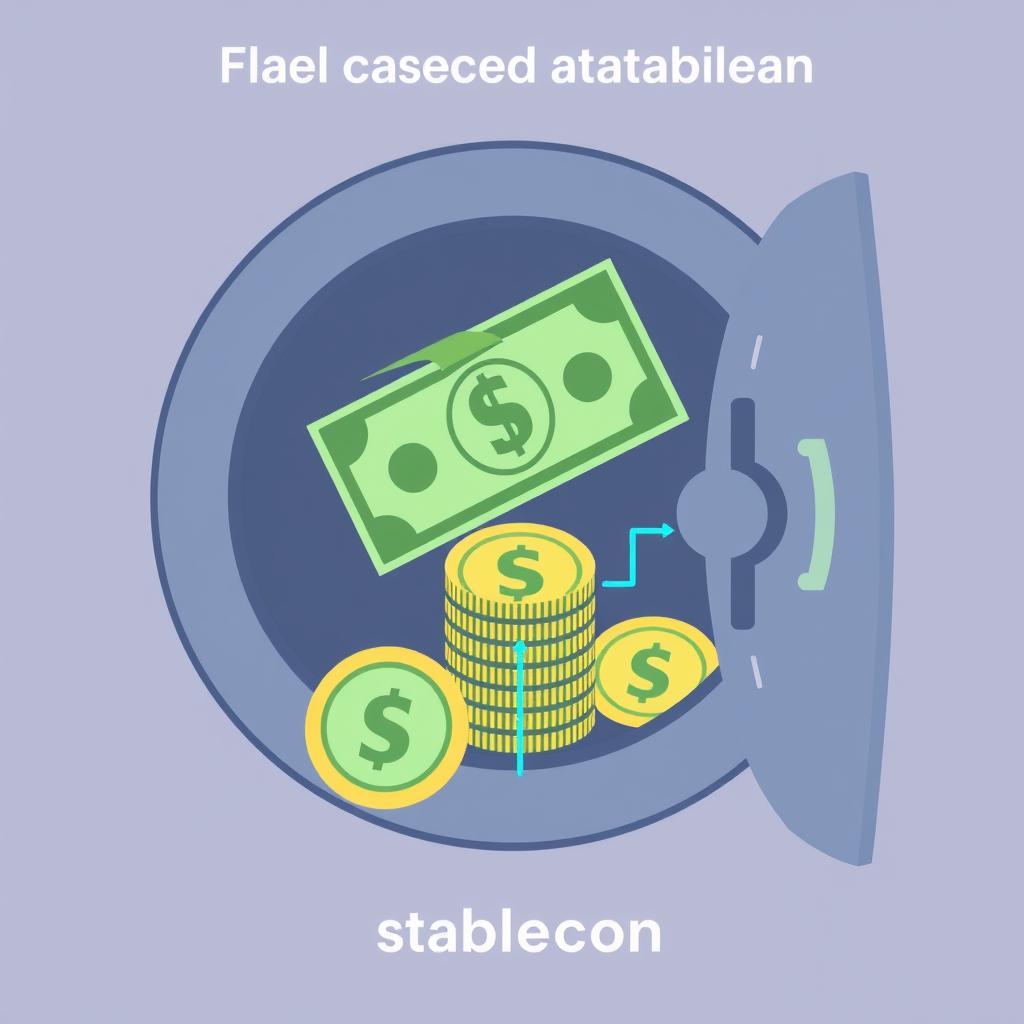
Crypto-Backed Stablecoins
Over-collateralized tokens like DAI that use other cryptocurrencies as collateral, typically requiring more than 100% backing.

Algorithmic Stablecoins
Decentralized tokens that use algorithms to expand or contract supply to maintain price stability, often with minimal or no collateral.
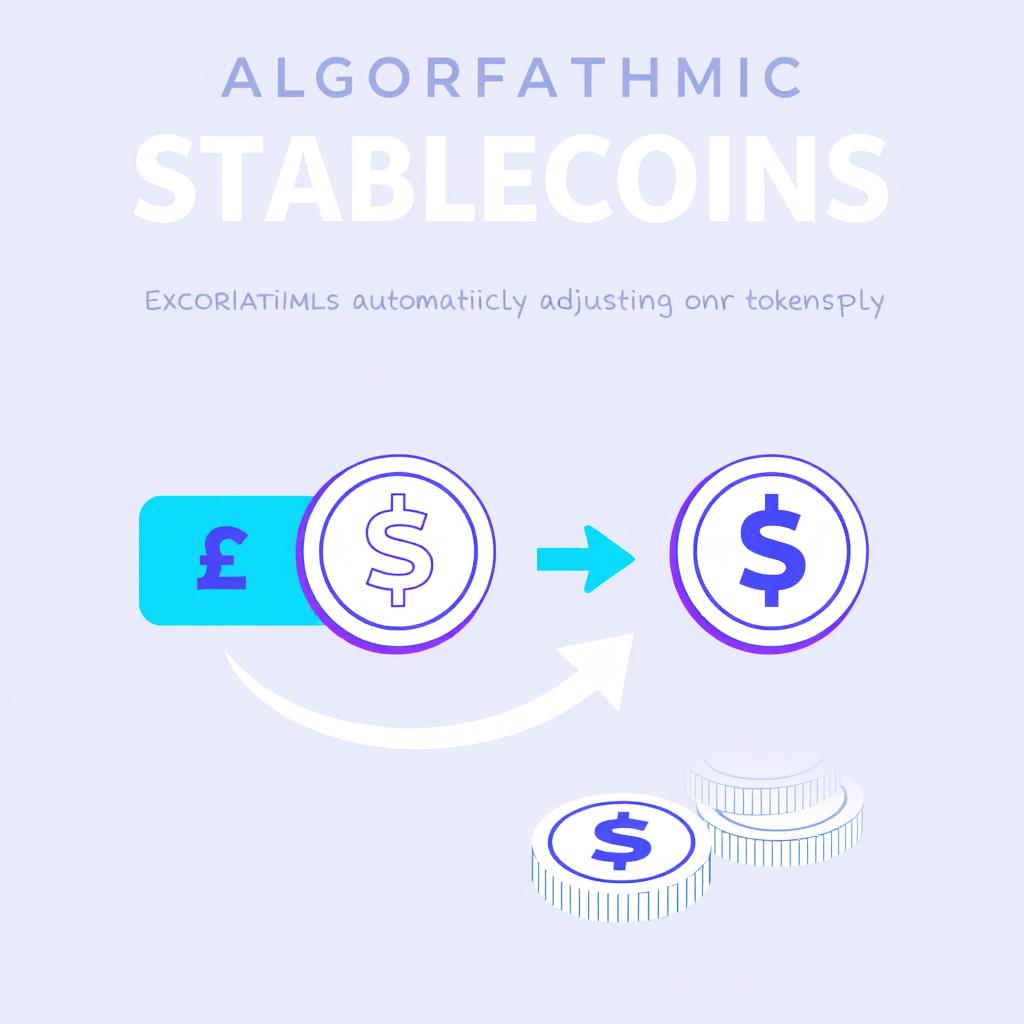
The stablecoin market has grown exponentially, with a combined market capitalization exceeding $200 billion in 2025. This growth has been driven by their utility in cross-border payments, trading pairs on crypto exchanges, and as a bridge between traditional finance and decentralized finance (DeFi) applications.
“Stablecoins have evolved from a niche crypto product to a critical component of the digital financial infrastructure, prompting regulators to take notice and action.”
As stablecoins gain adoption beyond the crypto ecosystem—with companies like PayPal, Stripe, and traditional banks entering the space—the need for clear regulatory frameworks has become increasingly urgent.
Current State of Stablecoin Regulations
The regulatory landscape for stablecoins is rapidly evolving across major jurisdictions, with significant developments in 2025. These frameworks aim to address concerns about reserve transparency, consumer protection, and potential systemic financial risks.
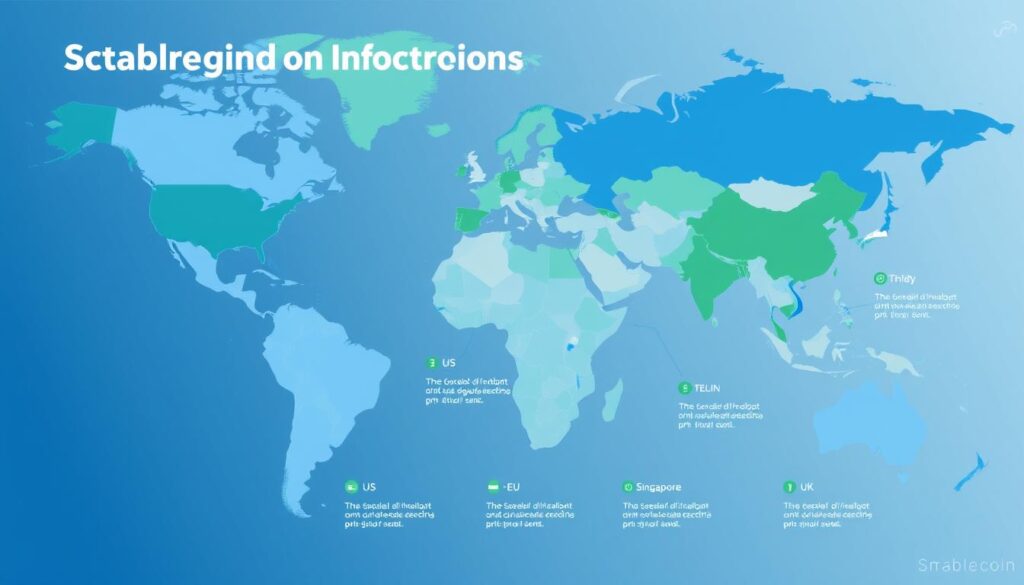
United States: The GENIUS Act and STABLE Act
In the United States, two major legislative proposals are currently under consideration: the Guiding and Establishing National Innovation for U.S. Stablecoins (GENIUS) Act and the Stablecoin Transparency and Accountability for a Better Ledger Economy (STABLE) Act.
| Feature | GENIUS Act | STABLE Act |
| Issuer Requirements | Restricts public companies not predominantly engaged in financial activities | No similar restriction on issuer types |
| Regulatory Framework | Federal and state licensing with $10B threshold for federal transition | Parallel federal and state frameworks without size threshold |
| Reserve Requirements | 1:1 backing with high-quality liquid assets | Similar 1:1 backing requirement |
| Security Classification | Explicitly not securities or commodities | Similar exclusion from securities framework |
The GENIUS Act passed the Senate in June 2025 with a bipartisan 68-30 vote and is awaiting House approval. If enacted, it would create a comprehensive regulatory regime for payment stablecoins, requiring issuers to maintain 1:1 reserves of high-quality liquid assets and submit to regular audits and disclosures.
European Union: Markets in Crypto-Assets (MiCA)
The EU’s MiCA regulation, which came into partial effect in June 2024, represents the first comprehensive crypto regulatory framework in Europe. For stablecoins, MiCA establishes two categories:
- E-Money Tokens (EMTs): Stablecoins pegged to a single fiat currency
- Asset-Referenced Tokens (ARTs): Stablecoins pegged to multiple currencies or other assets
MiCA effectively prohibits algorithmic stablecoins by requiring asset backing. Issuers must maintain liquid reserves at a 1:1 ratio and obtain authorization from regulators. The impact has been significant, with major exchanges like Kraken, Crypto.com, and Coinbase delisting non-compliant stablecoins including Tether (USDT) and PayPal USD (PYUSD).
United Kingdom and Asia-Pacific Approaches
The UK’s approach remains less defined, with the Financial Conduct Authority (FCA) publishing a crypto roadmap in November 2024 but without firm implementation dates. Meanwhile, Singapore has established a clear framework through the Monetary Authority of Singapore (MAS), categorizing stablecoins based on their peg (SGD/G10 currencies) and circulation volume.
In the Middle East, the UAE has embraced stablecoins with the Abu Dhabi Global Market (ADGM) approving fiat-referenced tokens in June 2024, while requiring 1:1 backing and prohibiting algorithmic models.
Stay Informed on Regulatory Developments
The stablecoin regulatory landscape is evolving rapidly. Subscribe to our monthly regulatory digest to receive updates on new frameworks, compliance requirements, and market impacts.
Impact on Digital Dollars and CBDCs
The regulatory frameworks emerging for stablecoins are developing in parallel with central bank digital currency (CBDC) initiatives, creating an interesting dynamic between private and public digital dollars.
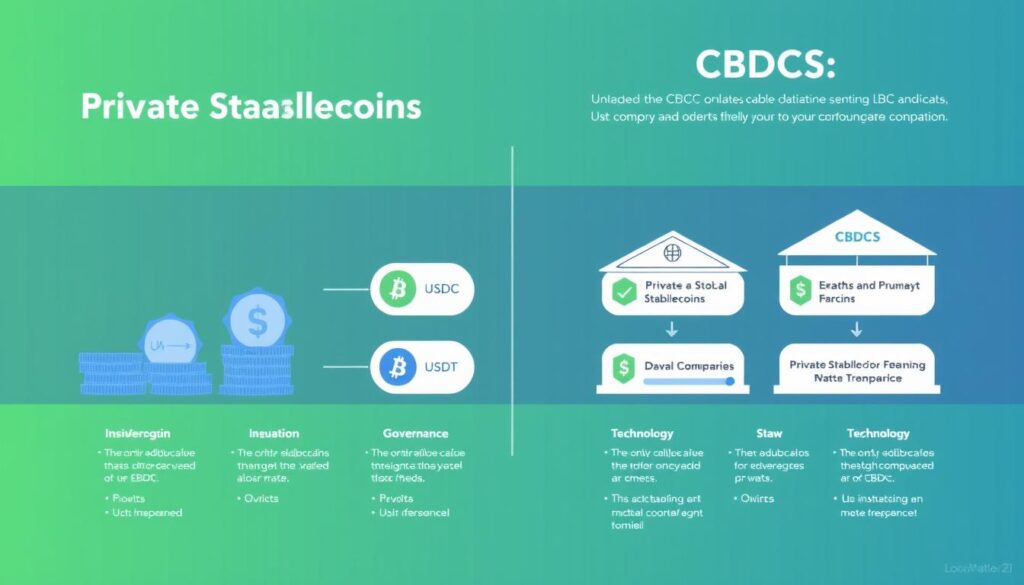
Private Stablecoins vs. Central Bank Digital Currencies
Private Stablecoins
- Market-driven innovation and competition
- Faster deployment and adaptation
- Cross-border functionality without geopolitical constraints
- Integration with existing crypto ecosystems
- Potential for programmability and smart contracts
Central Bank Digital Currencies
- Government backing and guaranteed stability
- Direct integration with monetary policy
- Potentially lower transaction costs
- Reduced counterparty risk
- Greater regulatory certainty
The GENIUS Act specifically addresses the relationship between stablecoins and potential CBDCs through the companion Anti-CBDC Surveillance State Act, which aims to block the creation of a U.S. CBDC to “safeguard Americans’ financial privacy.”
This legislative approach suggests a U.S. policy preference for regulated private stablecoins over a government-issued digital dollar, contrasting with China’s approach of restricting private stablecoins while advancing its Digital Yuan CBDC.
Global Implications for US Dollar Dominance
US dollar-pegged stablecoins currently dominate the market, with USDC, USDT, and others accounting for over 90% of stablecoin market capitalization. This has raised concerns about the impact on monetary sovereignty, particularly in developing economies.
“If dollar-backed stablecoins gain dominant status internationally, they could threaten global financial sovereignty—especially in developing economies.”
However, Federal Reserve Governor Christopher Waller has suggested that properly regulated stablecoins could benefit consumers by lowering transaction costs and injecting competition into the payments market.
The regulatory frameworks being established now will significantly influence whether US dollar stablecoins strengthen or weaken dollar dominance in the global financial system.
Market Analysis & Industry Reactions
The stablecoin market has responded dynamically to the evolving regulatory landscape, with significant shifts in market share, issuer strategies, and institutional adoption.
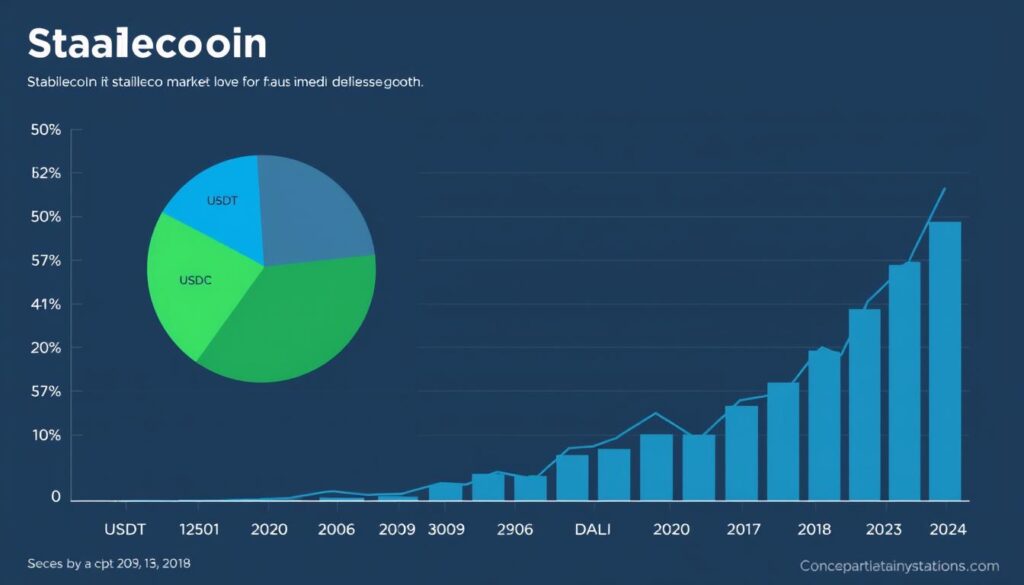
Market Trends and Adaptation Strategies
As regulatory clarity emerges, the stablecoin market is experiencing several notable trends:
- Consolidation around compliant issuers: Circle’s USDC has gained market share as it proactively embraces regulation, obtaining an e-money token license in France to comply with MiCA.
- Strategic partnerships: Tether has invested in EU-based StablR to maintain access to European markets despite EURT being delisted.
- Institutional custody solutions: BNY Mellon’s agreement to hold primary custody of Ripple’s stablecoin reserves signals growing traditional finance involvement.
- Regional expansion: Circle’s EURC and Ripple’s RLUSD demonstrate issuers’ focus on multi-currency strategies to navigate regional regulations.
- Delisting of non-compliant tokens: Major exchanges have removed stablecoins that don’t meet regulatory requirements, particularly in the EU under MiCA.
Expert Perspectives on Regulatory Impact
Pro-Regulation Viewpoint
“Clear regulatory frameworks will legitimize stablecoins, enabling broader adoption by reducing uncertainty and establishing trust with traditional financial institutions and consumers.”
Proponents argue that regulation will bring needed transparency to reserves, protect consumers, and create a level playing field for issuers.
Innovation-First Viewpoint
“Overly restrictive regulations risk stifling innovation and pushing stablecoin development to more permissive jurisdictions, potentially undermining U.S. and EU leadership in digital finance.”
Critics worry that requirements like the GENIUS Act’s restrictions on public companies could limit participation from tech innovators.

The market is also seeing increased specialization, with companies developing specific use cases beyond trading. AllScale’s recent $1.5 million funding to build stablecoin payment and treasury tools for small businesses exemplifies this trend toward practical applications.
Understand How Regulations Affect Your Business
Our team of regulatory experts can provide personalized insights on how stablecoin regulations impact your specific business model and strategic opportunities.
Compliance Challenges and Opportunities
As regulatory frameworks solidify, stablecoin issuers and service providers face both significant compliance challenges and strategic opportunities.
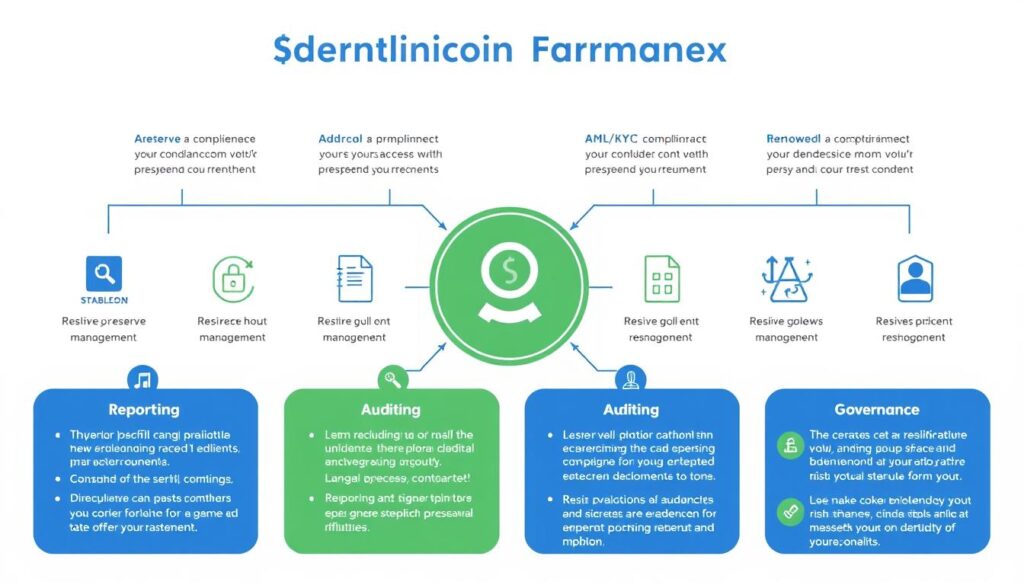
Key Compliance Requirements
| Requirement | GENIUS Act (US) | MiCA (EU) | Singapore (MAS) |
| Reserve Assets | High-quality liquid assets (cash, Treasuries, overnight repos) | Highly liquid assets with minimal market and credit risk | Similar high-quality requirements with prescribed assets |
| Auditing | Monthly examination by registered accounting firm | Independent audit of reserve assets every six months | Regular audits with public disclosure requirements |
| AML/KYC | Full Bank Secrecy Act compliance as financial institutions | Comprehensive AML framework with transaction monitoring | Strict KYC/AML requirements under Payment Services Act |
| Capital Requirements | Tailored capital requirements set by regulators | Minimum 350,000€ or 2% of reserve assets (whichever is higher) | Base capital requirements plus risk-based components |
Strategic Adaptation Approaches
Forward-thinking stablecoin projects are implementing several strategies to navigate the regulatory landscape:
Regulatory-First Design
Building stablecoins with compliance as a core feature rather than an afterthought, including reserve composition, governance, and transparency mechanisms.
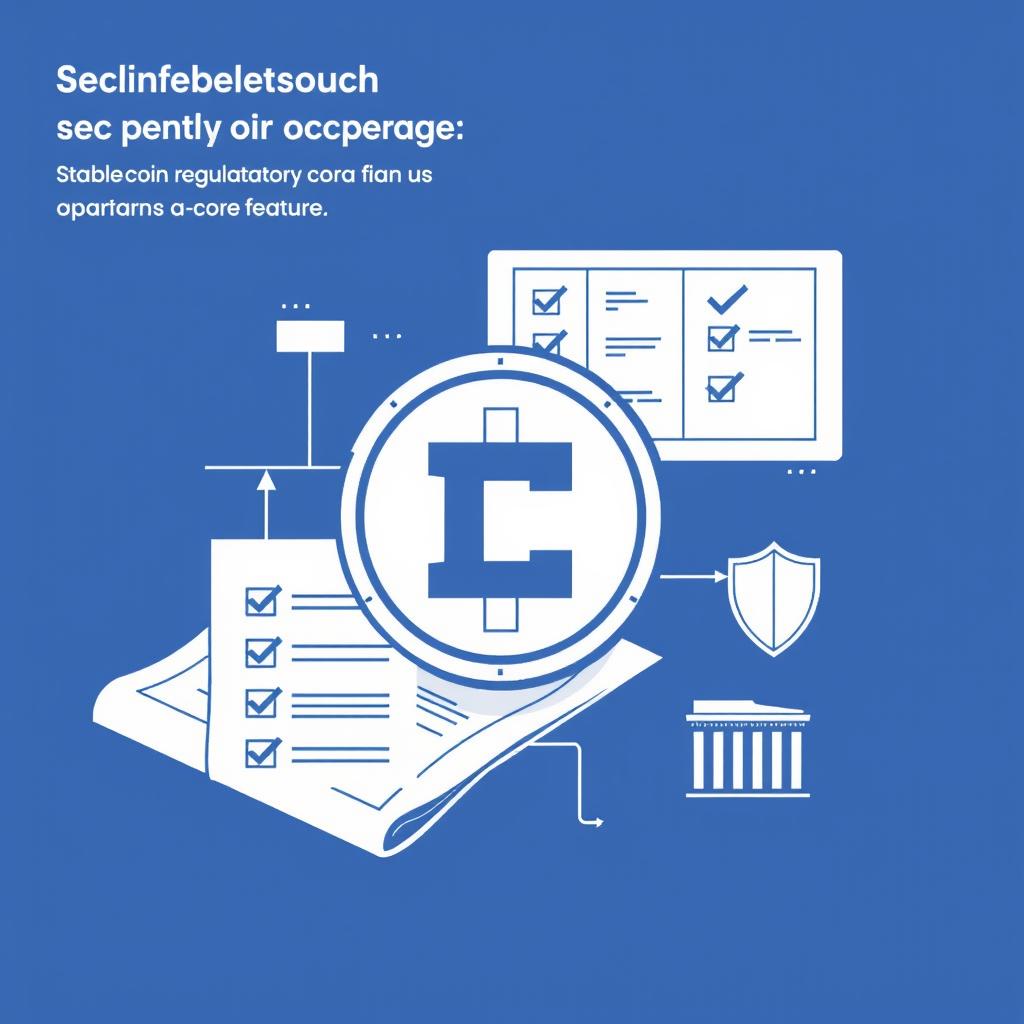
Jurisdictional Strategy
Establishing legal entities in multiple jurisdictions to create a flexible operational structure that can adapt to varying regulatory requirements.
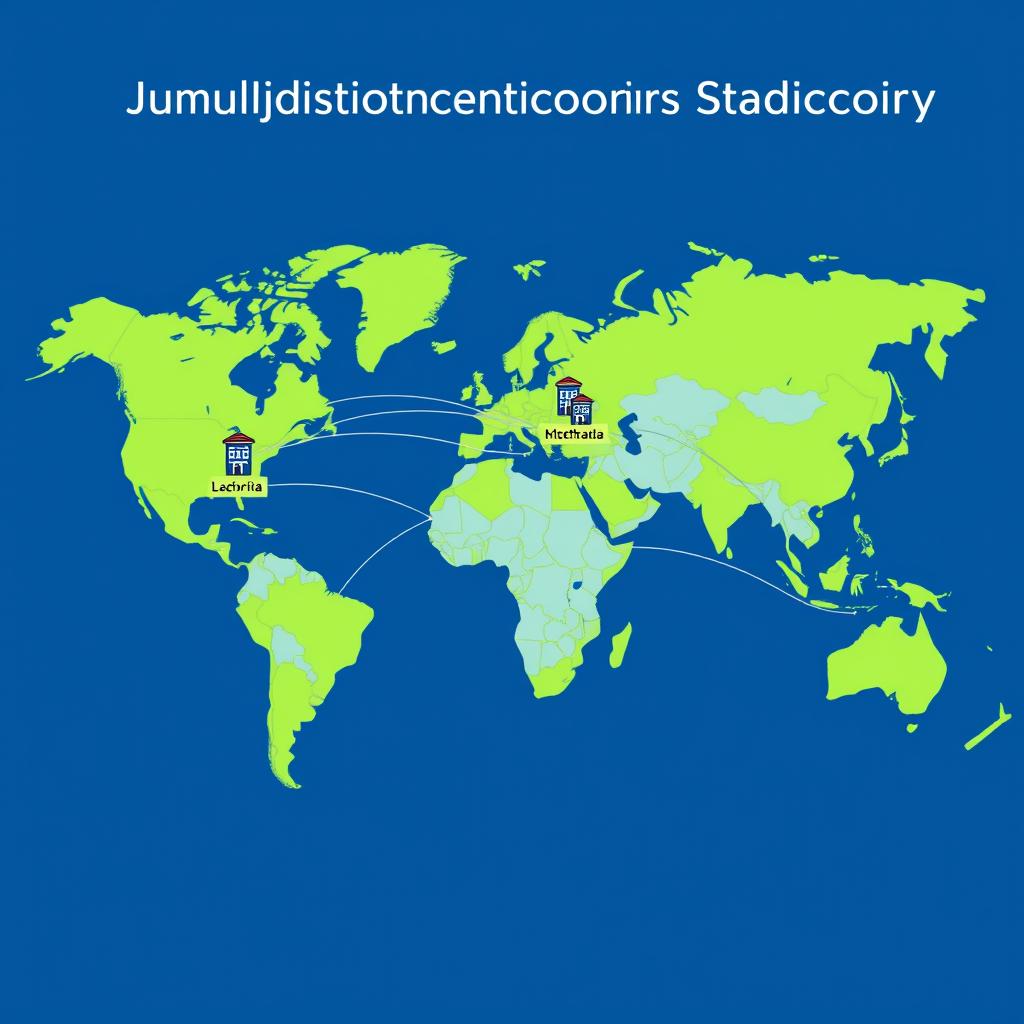
Transparency Innovation
Implementing real-time reserve attestations and blockchain-based verification systems that exceed regulatory requirements to build trust.
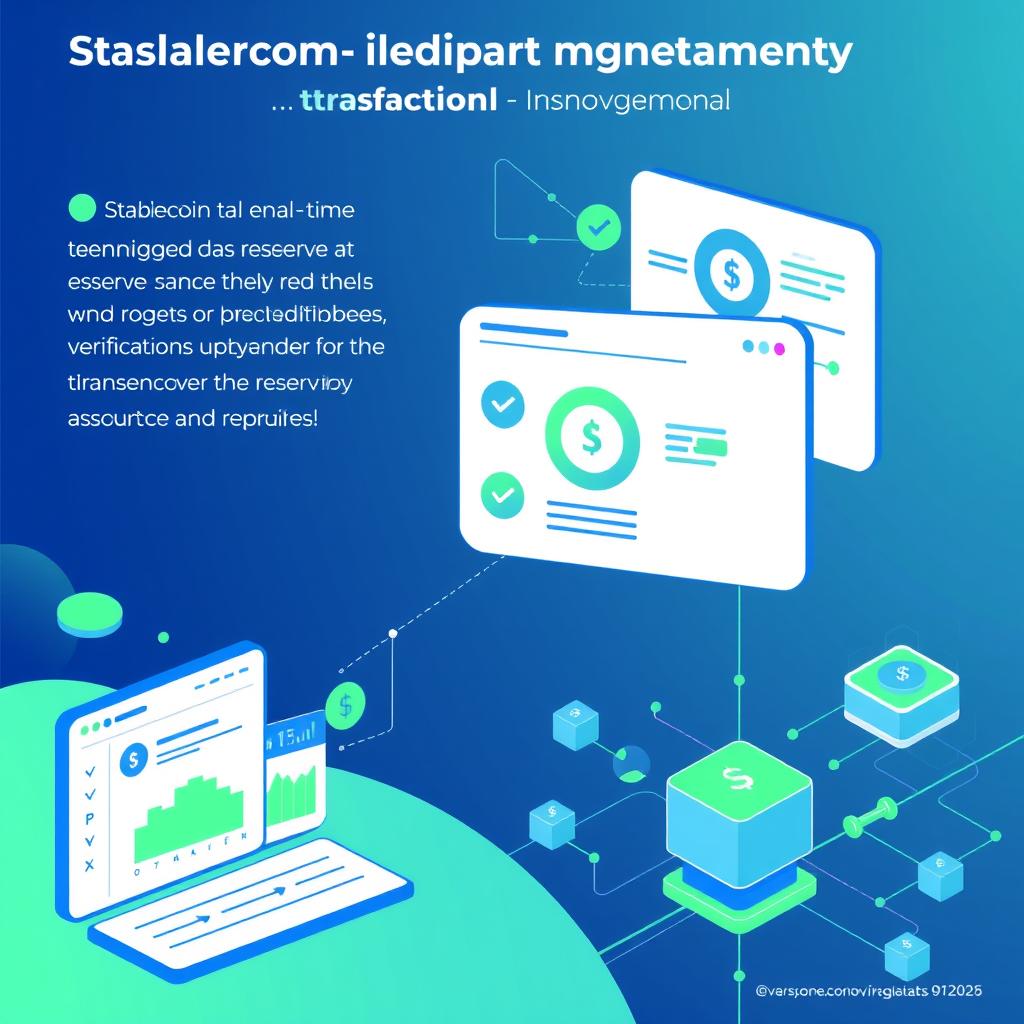
Circle’s approach to MiCA compliance provides a valuable case study. The company began its licensing process in March 2023, well ahead of implementation deadlines, by applying to French authorities. By May 2024, they published a MiCA-compliant whitepaper and subsequently received their Electronic Money Institution license from France’s banking regulatory authority.
“The most successful stablecoin issuers will be those who view regulation not as an obstacle but as a competitive advantage that builds trust with users and partners.”
Future of Stablecoins: Potential Scenarios
The regulatory frameworks being established now will shape the stablecoin landscape for years to come. Based on current trends, several potential scenarios could emerge:
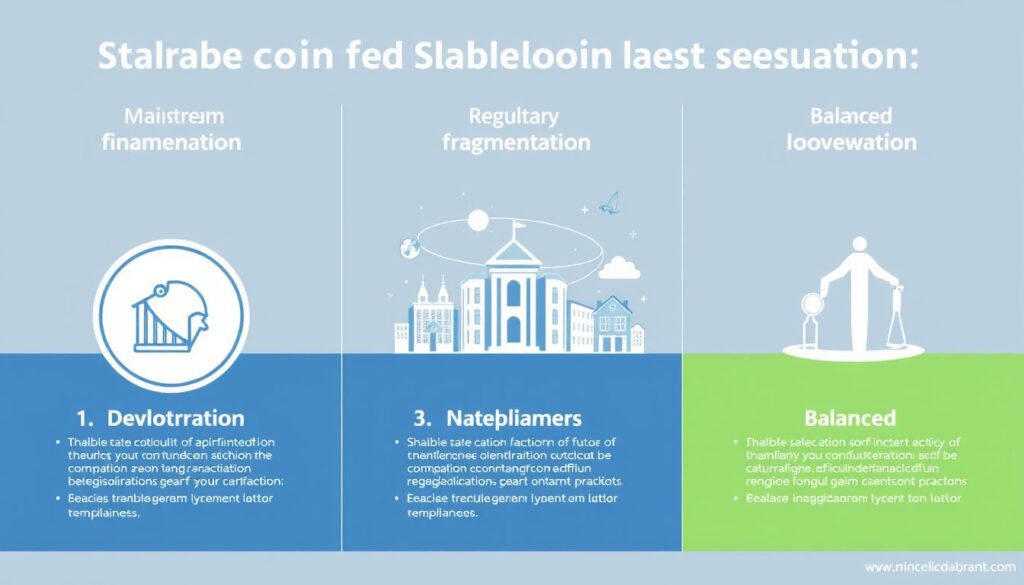
Scenario 1: Mainstream Financial Integration
In this scenario, regulated stablecoins become fully integrated into the traditional financial system, with banks and payment providers offering stablecoin services alongside conventional options.
- Key indicators: Major banks issuing stablecoins, integration with SWIFT and other payment networks, retail payment adoption
- Regulatory environment: Harmonized global standards similar to banking regulations
- Winners: Compliant, well-capitalized issuers with banking relationships
- Implications: Reduced transaction costs, faster settlements, but potentially less innovation
Scenario 2: Regulatory Fragmentation
This scenario envisions a fragmented global landscape where stablecoins operate under significantly different rules across jurisdictions, limiting interoperability.
- Key indicators: Region-specific stablecoins, limited cross-border functionality, regulatory arbitrage
- Regulatory environment: Inconsistent frameworks with minimal coordination
- Winners: Multi-jurisdictional issuers with diverse product offerings
- Implications: Increased compliance costs, market inefficiencies, but potential innovation havens
Scenario 3: Balanced Innovation with Oversight
The balanced scenario represents a middle path where regulation provides certainty while allowing for continued innovation in stablecoin design and use cases.
- Key indicators: Principles-based regulation, regulatory sandboxes, interoperability standards
- Regulatory environment: Coordinated but flexible frameworks focused on outcomes
- Winners: Adaptable issuers focused on compliance and innovation
- Implications: Sustainable growth, broader adoption, and new use cases
Emerging Use Cases Beyond Trading
As regulatory clarity emerges, stablecoins are likely to expand beyond their original use cases into new applications:
Cross-Border Payments
Regulated stablecoins could dramatically reduce the cost and time required for international remittances and business payments.
Programmable Money
Smart contract functionality enables automated payments, escrow services, and conditional transactions for business operations.
Financial Inclusion
Stablecoins could provide banking-like services to the unbanked population through simple mobile interfaces with lower barriers to entry.
The ultimate trajectory will depend on how regulators balance legitimate concerns about financial stability and consumer protection with the potential benefits of stablecoin innovation.
Conclusion: Navigating the Stablecoin Showdown
The regulatory frameworks emerging for stablecoins represent a pivotal moment in the evolution of digital finance. The “showdown” between innovation and regulation will determine whether stablecoins become a mainstream financial tool or remain primarily within the crypto ecosystem.

Key takeaways from our analysis include:
- The GENIUS Act and MiCA represent the most comprehensive regulatory frameworks to date, focusing on reserve requirements, transparency, and consumer protection.
- Successful stablecoin issuers are proactively adapting to regulations through compliance-first design, strategic jurisdictional approaches, and transparency innovations.
- The relationship between private stablecoins and CBDCs remains complex, with different regions taking varying approaches to balancing these digital currency options.
- Market consolidation is likely as compliance costs increase, potentially favoring well-capitalized issuers with established banking relationships.
- The next 12-24 months will be critical in determining which regulatory approach becomes dominant globally.
For businesses and individuals interested in stablecoins, now is the time to understand the regulatory landscape and position accordingly. Whether you’re a financial institution exploring stablecoin issuance, a business considering stablecoin payments, or an investor evaluating opportunities, regulatory compliance will be a critical factor in success.
“The next 12 months will decide whether stablecoins become the backbone of digital finance or a cautionary tale of unchecked innovation. The winners will be those who embrace both regulatory compliance and technological innovation.”
Stay Ahead of Stablecoin Regulatory Changes
Subscribe to our comprehensive stablecoin regulation digest for monthly updates on global frameworks, compliance requirements, and market developments.


